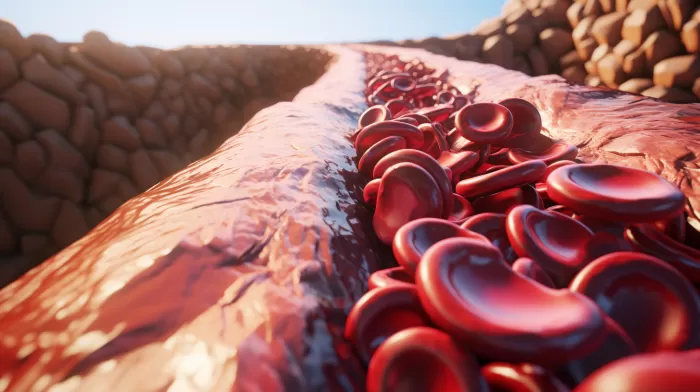Is it possible to be trim, thin, toned, looking perfectly healthy on the outside, but then suffer from seemingly undetectable diseases on the inside? The short answer is, yes.
Understanding Real Health
Health is not merely the absence of disease; it is the maintenance of wellness regardless of whether a disease has been diagnosed. You can still be disease-free and suffer from unhealthy conditions like acute or chronic headaches, back pain, anxiety, insomnia, or acid reflux.
In this vein, it is possible to suffer from diseases like high cholesterol, heart disease, tumors, leaky gut syndrome, and other silent killers despite appearing healthy and vibrant on the surface. In fact, a recent study of arteriosclerosis published in the Journal of the American Medical Association (JAMA) offers substantial evidence for this fact.
The Importance of Healthy Arteries
Having healthy arteries is essential for our overall wellbeing. Arteries can be thought of as tunnels through which blood transports oxygen and nutrients from the heart to the entire body. When these arteries are healthy, they are flexible and elastic. However, when blood tunnels become blocked or clogged, our body fails to receive oxygen and nutrients, causing the arterial walls to thicken and become rigid. This process is called arteriosclerosis.
A type of arteriosclerosis, called atherosclerosis, is an arterial hardening resulting from the accumulation of fats and cholesterol in and on the arterial walls. This arterial plaque can restrict blood flow and potentially cause blood clots.
Interesting Findings from the Military
A recent study on young, seemingly “fit” military personnel showed just how unhealthy a person can be despite their exterior appearance. In this study, it was discovered that a good percentage of servicemen and women suffered from undetected atherosclerosis, a disease usually thought to be reserved for sedentary middle-aged people.
The study design involved a cross-sectional examination of U.S. service members who died from combat or unintentional injuries in support of Operations Enduring Freedom and Iraqi Freedom/New Dawn between October 2001 and August 2011. It took into account factors like age, sex, race, ethnicity, education, occupation, military rank, and many more.
This research showed that a significant percentage of young, fit service members had potentially deadly hardening and blockage of the arteries. Among deployed U.S. service members who died and received autopsies, about one in 12 suffered from atherosclerosis in one or more coronary arteries, a terrifying number considering this condition isn’t detectable until it’s too late. None of these individuals had been previously diagnosed or told they were at risk for developing heart disease.
Lifestyle Changes for A Healthier Future
Fortunately, arteriosclerosis and atherosclerosis can be reduced and prevented through modifications in lifestyle, as well as medication and surgery if necessary.
One of the most effective ways is altering your diet to manage high blood pressure and cholesterol levels. Consuming more whole grains and fresh vegetables, legumes, and fruits while avoiding fried fatty foods and those containing saturated fats can promote heart health.
Moreover, it’s crucial to maintain physical fitness and avoid a sedentary lifestyle. Both healthy diets and sufficient exercise contribute to weight management, which can prevent or mitigate arterial hardening. Furthermore, lowering stress levels and quitting smoking are other essential lifestyle changes that can help reduce the risk of arteriosclerosis and atherosclerosis.
So, by changing our eating habits, staying active, reducing stress, and monitoring what we put into our bodies, we can ultimately guard against diseases associated with hardening and blockage of the arteries, heart disease, and stroke. Despite looking fit and feeling healthy, there can be hidden risks – don’t let a silent killer sneak up on you.



